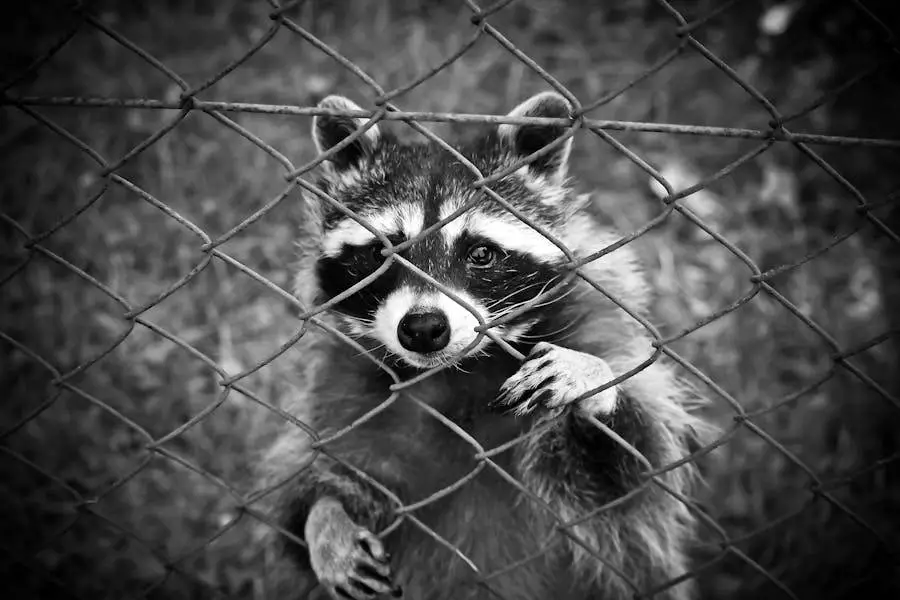Table of Contents
Raccoons, while often cute and seemingly harmless, can pose significant problems when they invade our homes, gardens, or farms.

Their curiosity, intelligence, and dexterity often lead them into traps set by humans. However, once you have a raccoon in your trap, figuring out what to do next can be a daunting task.
This comprehensive guide aims to help you navigate through the process, providing the best methods for disposing of a trapped raccoon humanely and safely.
Understanding the Legalities
Knowledge of Local Laws
The first step in dealing with a trapped raccoon is understanding your local laws and regulations concerning wildlife.
Different regions have different rules regarding the trapping, relocation, or euthanasia of raccoons. Some localities may prohibit relocation entirely, while others might require special permits.
Violating these laws could potentially lead to fines or other legal consequences. Therefore, it’s crucial to get informed.
You can usually find information on local wildlife laws on your city or county’s official website or by contacting your local animal control agency.
Consulting a Wildlife Expert
If you’re unsure about the local laws or how to interpret them, consulting with a wildlife expert can provide clarity.
These professionals are well-versed in the legalities surrounding wildlife handling and can offer valuable advice tailored to your specific situation.
They can also provide insights into raccoon behavior and habits, which can be useful for both dealing with the current situation and preventing future encounters.
Humane Release in the Wild
Finding a Suitable Habitat
If local laws permit, releasing the trapped raccoon back into the wild can be an excellent and humane option.
However, it’s vital to choose a suitable release site that supports the raccoon’s survival.
A suitable habitat should ideally be a wooded area with plenty of trees for shelter, a water source, and an abundant food supply.
This site should also be far from human settlements to minimize the chances of the raccoon causing problems for people.
Safe Transport Methods
Transporting a trapped raccoon to the release site can be a tricky task. The raccoon will likely be frightened and stressed, increasing the risk of injury to both the animal and the handler.
To minimize this risk, the cage should be securely covered to reduce visual stimuli, and you should avoid making loud noises.
It’s also advisable to wear protective gloves and long-sleeved clothing during handling to protect against scratches or bites.
Contacting Wildlife Control Services
When to Contact Professionals
If you find yourself dealing with a raccoon that is injured, sick, or particularly aggressive, it’s best to leave the situation to professionals.
Wildlife control services have the necessary expertise and equipment to handle such cases safely and humanely.
They’re trained to assess the animal’s condition and determine the most suitable course of action, whether that’s treatment, relocation, or, in some unfortunate cases, euthanasia.
Choosing the Right Service

Choosing the right wildlife control service is crucial. Look for services that prioritize humane methods and have a good reputation.
They should be licensed, insured, and have positive reviews or references. You can often find reviews online or get recommendations from local wildlife organizations.
Using Raccoon-Specific Rehoming Centers
Understanding Rehoming Centers
Rehoming centers, also known as wildlife rehabilitation centers, specialize in caring for injured or orphaned wildlife until they’re ready to return to the wild.
They have the necessary resources and expertise to care for raccoons, providing them with suitable diets, medical care, and housing.
These centers aim to release the animals back into their natural habitats once they’re able to survive independently.
Locating a Rehoming Center
Finding a local raccoon rehoming center can be as simple as doing an online search. However, not all centers accept raccoons, so it’s important to confirm this before bringing the animal there.
You can also consult with local wildlife organizations or your local animal control agency for recommendations.
Using Humane Euthanasia
When Euthanasia is Necessary
Euthanasia is usually considered a last resort when dealing with trapped raccoons.
This option is typically reserved for situations where the raccoon is severely injured, sick beyond recovery, or poses a significant threat to public health and safety.
It’s a difficult decision to make, but sometimes it’s the most humane option.
Ensuring a Humane Procedure
If euthanasia is deemed necessary, it’s crucial that the procedure is carried out by a trained professional, such as a veterinarian or a certified wildlife rehabilitator.
They have the skills and knowledge to ensure the process is quick and painless.
Following euthanasia, it’s also essential to dispose of the raccoon’s body properly to prevent the spread of diseases. Your local animal control agency can provide guidance on safe disposal methods.
Prevention and Deterrents

Making Your Property Less Attractive
Preventing future raccoon intrusions can save both you and the raccoons from unnecessary stress. Start by making your property less attractive to raccoons.
This could involve securing your trash cans with bungee cords or locks, removing potential food sources like pet food or bird feeders, and sealing off potential entry points to your home or other structures on your property.
Employing Raccoon Deterrents
In addition to making your property less appealing, you can also employ various deterrents to keep raccoons at bay.
This might include motion-activated sprinklers, ultrasonic repellents, or natural deterrents like cayenne pepper or ammonia-soaked rags.
Remember, though, that these methods should be used as part of a comprehensive prevention strategy and not relied upon solely.
Educating Yourself and Others
Learning About Raccoons
Having a basic understanding of raccoon behavior can help you better manage any encounters and prevent potential conflicts.
Raccoons are generally nocturnal creatures and are most active at night.
They’re omnivorous and will eat just about anything, which is why they’re often attracted to areas with easy access to food, water, and shelter.
Spreading Awareness
Once you’ve educated yourself, it’s important to spread this knowledge within your community.
Sharing information and experiences can help others better understand how to deal with raccoons humanely and effectively.
This could involve organizing a neighborhood meeting, sharing resources online, or simply discussing the topic with your neighbors.
Conclusion
Dealing with a trapped raccoon can be a daunting task, but with the right information, it can be handled humanely and safely.
Whether you decide to release the raccoon back into the wild, contact a professional wildlife control service, use a rehoming center, or resort to humane euthanasia, the key is to prioritize the welfare of the animal while also considering public health and safety.
And remember, the best way to deal with raccoons is to prevent them from becoming a problem in the first place, so implementing deterrent measures and making your property less attractive to these critters can go a long way in avoiding future raccoon issues.

